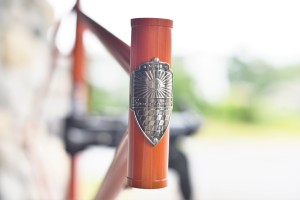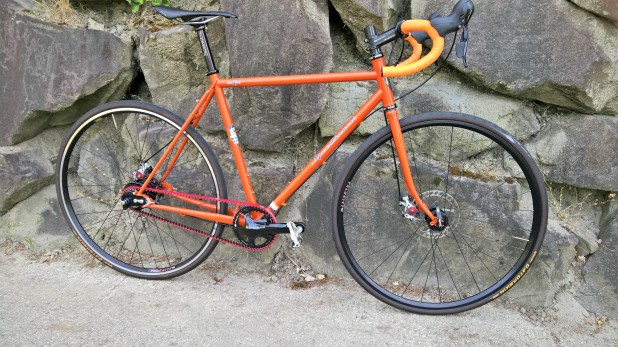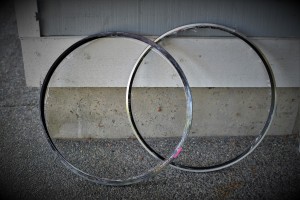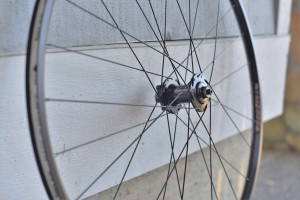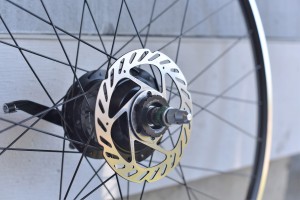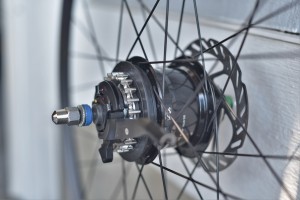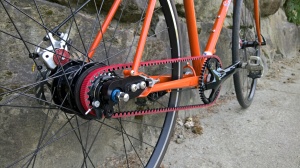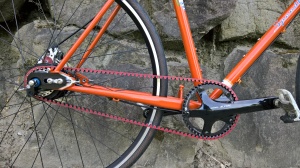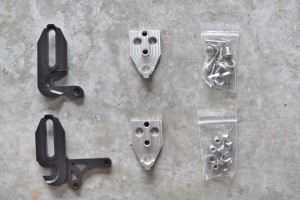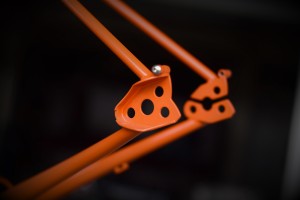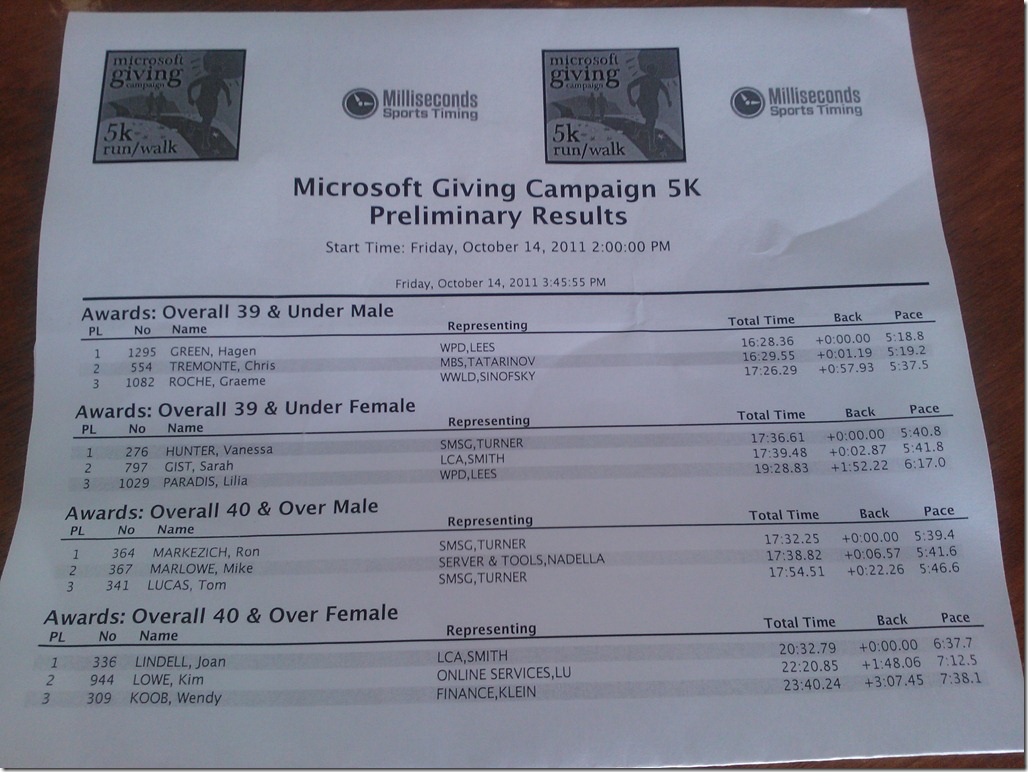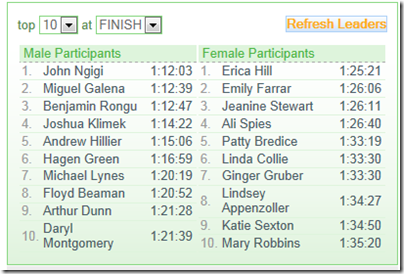Hey there! The last time I posted was before my first born who’s now 2 1/2 years old, can count to 60, and recites his ABCs like no other. He’s an incredible kid. Beyond the trying & rewarding experiences of being a father, I not only got back normal sleep cycles, but I finally got around to building my dream commuter bicycle. This is a LONG time in the making as my friends would attest. Did I mention my son already rides a tricycle on his own? And he loves his balance bike. I’ll soon be the one chasing after him.
Why another one?
I had three motivations for building my 7th bike. (That my wife enthusiastically bought into, thankfully.) First is safety. I wanted dual disc brakes instead of a single front cantilever as I have on my fixie. Not just for my own safety, but I wanted to feel totally confident and in control when towing my son in the trailer. Second: hills. The surrounding area is full of 300-500 ft hills. I have 3 of these hills each way on my weekday commute. As much as I’m a climber at heart, going up these hills on a daily basis is getting old in the same 42×18 gear. And I’m not getting any younger. Finally, I’ve been longing a fine steel machine I could enjoy year-round. Modern, yet classic. Sporty, yet comfortable. I had a vision of exactly what I wanted. No hold backs that I’d regret months or even years later. This meant I put the stake in the ground early for the list of high-priority features: disc brakes (great all weather braking), belt drive (clean, silent, no lubes, near zero maintenance), and an internal gear hub (for pulling that big kiddo up hills as well as my own lazy butt after a long workday).
My Stable
Each of my bikes serve a purpose. My mountain bike is rarely ridden, but when it is it’s for serious off-roading like single-track at Rainier or adventure races. My Bike Friday Pocket Rocket is a folding speedster primarily for traveling and an occasional fun bike to toss around town. My Cervelo Soloist, the last bicycle I fully built up back in 2008, is my road race bike. The Cervelo P2C is for triathlons and Ironman. The Bianchi San Jose is my fits-like-a-glove fixed gear that serves as my primary year-round beater & commuter. And finally my (well, passed down to me from my cycle-crazy grandfather) Hetchins Magnum Opus is a priceless gem, recently stripped down and kept safe for the day I get the itch (and time!) to do a strip-down, paint & rebuild as my grandfather originally had it in the 70s. My last bike was given away – a full size adult Schwinn tricycle that I trained on (I think I got 5 rides in) to ride 206 miles from Seattle to Portland to hand over to charity. I’m holding back the two-wheeling tilt stories for another time. I suppose that leaves me with only 6 bikes. There’s a clear gap in my lineup, no?
Planning for a 7th…
The hardest part in building up a bike is designing its feel. How it’ll ride, how it’ll handle turns, how it feels like a natural extension of the body as it magically disappears from under you. I knew exactly what I wanted. I envisioned the experience. There’s a short stretch of road with multiple bumpy sewer covers — each cover has its own bump characteristics — near my house that I use as a basis for how a bike rides against pavement. I’m acutely aware of how every one of my bikes feel on this stretch. I had a precise expectation of how I wanted the new bike to feel. The biggest problem? I had no way to test a new bike without just building it & riding it…at which point I’m fully committed! I started by looking at frames, hubs, and wheels and putting together how I think they’d feel together in my mind. An impossibly hard task. So I started by looking at frames that had the right material & geometry as well as a classy but clean aesthetic. All the while, I had to find a frameset that also met my functional requirements like supporting a belt drive & disc brakes – specific features that you’ll find on a small but growing number of framesets.
Finding Speedhound
I took my sweet time looking for the right one. One night, while scouring the web for frames, I stumbled upon Speedhound Bikes. They make only one frameset called, fittingly, the OnlyOne. It’s one of the most versatile frames that I came across, allowing for flexibility in how it’s built up. At first I frowned upon this – a jack of everything is a jack of nothing. So I moved on. But I eventually circled back and reconsidered after deeper reading. Several aspects of this frameset resonated with me. First was the True Temper Platinum OX steel tubing and the classic full size frame geometry. Next was it fulfilled all of my functional requirements like belt support & discs. Last, but not least, was the inspiration Chris Cleveland — the man behind Speedhound — drew from classic British bicycles, including Hetchins. This excerpt from one of Chris’s posts struck the final chord for me.
Perhaps our best muse is Hetchins, with its heroic cast metal headbadge and seat tube shield wreathed in laurel. The photos show details of a bike in Speedhound’s collection, a 1956 Hetchins Experto Crede Vibrant in original, unrestored condition. This old steed still rides wonderfully, a testament to the enduring quality of steel. For more vintage eye candy, go to www.hetchins.org.
http://blog.speedhoundbikes.com/2010/11/23/speedhounds-graphic-inspiration
Bingo!
So I began my dialogue with Speedhound, based in Minneapolis, which turned out to be directly with Chris. This guy not only knows his stuff, but he was consistently super responsive and guided me through customizing my frame to not only meet my requirements, but make it uniquely mine. It’s rare to receive this level of service anywhere these days unless you really know the folks behind the curtain. I didn’t know Chris, but I felt a sense of trust early on. He helped me through the arduous decision making as I was between sizes – helping me understand ride tradeoffs and how a few of his friends (of various sizes) fit & felt on those sizes. All-in-all, I was very pleased with Chris and team Speedhound. They’re a great set of folks that consistently delight & deliver. I highly recommend anyone looking for a solid, beautifully lugged steel frameset talk to the fine folks at Speedhound. I hope I get another opportunity to partner with them again in the future.
The Art & Science of Planning
Building up a machine with as many complex parts as a bicycle is part art and science. After building the mental vision, I used a spreadsheet to start making it real. I started by making a list of every part on the bike & initial thoughts on what I think I needed. Then I did a deep dive into each part and whether it aligned with my vision, would technically work with my build (e.g., disc brake rotor size) or my body (handlebar drop & width). You can find a full inventory of the parts I used for the build, below. I have ZERO regrets on all of the parts I’ve used. Here’s a quick breakdown of the big pieces and how they turned out.
Wheelset
I am thrilled with the Velocity A23 wheelset. It’s very light, strong, and creates a tire profile that mimics the feel of tubulars more so than any other wheelset I’ve ridden. The front Hope hub is silky smooth and with J-spokes in 28 holes, it’s super strong. The rear wheel, with the off-center spoke holes to better balance drive and non-drive side lace tension, does a wonderful job transferring power and road feel despite the heavy 11 speed internal gear hub.
Steering
The steering is like a hot knife through butter. Road feel is surprisingly very high, despite the raked steel fork. Anyone used to a Cadillac-like feel of a classic steel bike floating over bumps and road imperfections (i.e., my Bianchi San Jose) will be shocked by the connectedness of this Speedhound. It’s nearly at the point of questioning whether there’s an aluminum or carbon steerer, but as you ride along, you notice the jittery harshness of aluminum or carbon is absent. Result? You find you are more attentive to the terrain and your steering, but your grip is more relaxed because you’re more confident. If you decide to grip the bars or hoods you need not worry about your teeth chattering.
Brakes
It’s been a decade since I’ve seriously worked on disc brakes. I was concerned about getting them installed right without annoying chatter. Luckily Avid & their brakes have come a long way: installation was a cinch. At first the BB7 Road brakes weren’t grippy. It felt like they were slicked with oil as the pads struggled to find friction against the rotors. This was simply pad break-in over the first days of riding. After that, the performance was as you’d expect from discs.
The most common critique when I talk to folks about the bike is why i didn’t go with hydraulic brakes. On a mountain bike, sure. But that weight isn’t desired on a road bike. Nor do you actually need that kind of stopping power behind a single finger. The leverage behind my hand on road bars is plenty for quickly slowing to a stop. Even with a trailer and kid in tow down a 15-20% grade hill… I was blown away as the brakes handled the additional 50lbs behind me to no fanfare. Totally unexpected and amazing.
Gearing & Shifting
Not many people ask about gearing, but it must be on their minds. The Alfine 11 has a very wide range of gears, with a relatively close set of gears in the mid-range. Shimano recommends a hair higher than a 2:1 gear ratio which I stuck to (46/22) not just to comply with recommendations, but it also gave me what I needed. I’m most often in gears 5-6-7 on the flats. Lower gives you easier gears to spin up hills – in particular the lowest gear feels like a granny gear which is wonderful for pulling the heavy trailer up the hill home. The higher gears give me plenty of speed, spinning around 80-90 rpm at 40mph in 11th gear shows this hub’s range. Shimano says it’s 409%. Sure feels like it. If To be nitpicky, I would trade the super high range of 11th for another gear between 7th & 8th – but by no means is it a deal breaker for day-to-day riding.
Shifting is a little different story. On the bright side, shifting is super quick and eerily silent. On the dark side, shifting has been hit or miss for me. 6th to 7th gear occasionally stops my crank from rotating in the middle of the shift. I believe that was attributed to poor alignment of the shifting cable which I’ve since fixed, but the possibility of that happening again is somewhat harrowing. Worse is the “super spin” that happens in or around 9th gear. Rarely, I’ll suddenly lose the back-pressure and suddenly the crank spins quickly under my feet as I’m pushing. This is scary and is potential for an accident. Again, I think I fixed this with calibration, but still super concerning. And the most concerning problem? The hub skips with a loud and scary “clunk” when standing and applying a large amount of power. This problem happens when getting going from a stop, but can also happen while already moving. I’ve noticed I can’t reproduce it most of the time once I’m moving, but it’s not consistent. To mitigate the problem, I just don’t stand and mash the pedals. Instead, I simply shift to an easier gear and spin. Since I can shift while not moving it makes the solution more tractable. Yet I’m gravely concerned the hub has fundamental engineering design flaws. At this point, I’m not done dialing in the shifter cable position and there’s likely some break-in that still needs to happen. The verdict is still out. I love the hub 95% of the time, but I have low confidence & safety concerns. If things don’t get better over the next few hundred miles, I’ll be starting a serious conversation with Shimano.
Fit
Friends and colleagues getting into cycling or buying a bike frequently look to me for advice. I love the opportunity to talk about the human elements of cycling and how to match man with machine.
What’s funny is how “off” our culture is when it comes to what matters most. I’m not sure why folks are so obsessed with frame material, components, or brand name. I usually respond with my “favorite” (well, not anymore!) bike cost $600 (my Bianchi San Jose fixie) that I put over 40,000 miles on. It fits like a glove, it’s comfortable, and most importantly – simply put – it’s a fun bike.
My goal with the Speedhound build was to make it fit BETTER than my fixie. How? The fixie was a bit too upright and the seat tube angle too relaxed. The Cervelo Soloist was too aggressive. The Pocket Rocket fit is right on, but with its small 21″ wheels and fairly twisty (but comfy steel) frame, it’s not the lively ride I desired for my daily driver.
So how did the Speedhound fit turn out? PERFECT! I can’t count how many times I measured various aspects of each of my existing bikes. As and after riding each of them, I considered what worked and what didn’t – taking notes and more measurements! In the end, I had a really good feeling what I’d be getting. The variable was the stem & bars. I bought three stems (each 10mm apart) but I took a risk and bet on a single compact bar that had just the right shape, reach, and drop that I knew I’d love.
It’s really all about fit. This bike wouldn’t be as magical as it turned out if it wasn’t for the fit I dialed in. It’s better than any of my other bikes. So good, in fact, I’m considering a new stem size for my fixie!
Aesthetics
Making it functional & fitting great is half the battle. The other half is making it look cool. My vision included an orange & black theme and ultra-clean cable management. Chris suggested several options to help achieve this clean & slick look. One excellent aesthetic option was top tube internal cable routing, thus no cabling runs outside of the top tube. Another option was cable guides along the down tube & chain stay that allowed for zip-ties to run through them. This feature was key, because I did not want zip-ties (despite having orange zip-ties to match the frame color) going around any part of the frame.
When the Rubber Meets Road
The maiden voyage on my Speedhound was a warm summer night in mid-July. July 15th @ 9pm before wrapping the bars I made sure I got the bar & hood fit dialed in. After wrapping the bars and attempting to get a reasonable night of sleep, I rode it 10 miles into work the next day. The brakes were weak and the rear hub sapped too much of my pedaling — par for the course with new, yet-to-be-broken in components. (But, sure enough, the headset was like butter from the first second!) The biggest surprise for me is how the bike rides over pavement. I’ve put on a couple hundred miles and have done a ton of thinking about how to explain it. The best analogy my engineering mind has conjured is that of a high & low-pass filter. The low pass filter is dialed up such that I know I’m on broken or uneven pavement, but I don’t really “feel” it unless I really pay attention. But those little things don’t matter – they distract from the ride because they’re almost always present unless you’re riding on a perfectly smooth surface. On the contrary, the high pass filter is weak but present at the “high end” such that it cuts out the sharp jolts that would otherwise rattle your bones. My fixie rides like a Cadillac over that section of sewer covers. The Speedhound, in contrast, actually feels more like my aluminum or carbon bikes in terms of being connected to the pavement – I think I could draw the profile shape of the sewer covers if I rode over them with my eyes closed. This is saying a lot, because I couldn’t do the same with my other bikes. The fixie is numb – I know I’m gliding over something but I couldn’t tell you exactly what. My Cervelos give a sharp jolt on the lips of the cement before meeting the sewer cover, and then again coming off the cover back to the pavement. This jolt makes it impossible to feel comfortable because the bike is jittery. You anticipate the sharpness so you automatically lift your body up and prepare such as a bull rider anticipates the bull’s next move. On the Speedhound, the oneness with the bike is unparalleled. It’s super responsive and hugs the road, but doesn’t punish. Not even close. In fact, the front fork rake would suggest it’s mushy. Far from it. Turn-in is precise and crisp. In fact, I’m surprised how much of a connection I really have with the road, yet it’s not harsh. Conti Gatorback 700/25 rubber, Velocity rims, super smooth rolling Hope hubs, 28 hole J-spokes, and the steel raked fork all play into that feel. It’s a near magical combination that sends the riding experience to new level of ‘being one’ with the bike.
The rear is still responsive, but not nearly as the front. I blame the Alfine 11 due to its heft and perhaps a little blame goes to using 60% of the drop-out slider capacity to tension the belt. But that blame shouldn’t go mistaken. Soaking up a bit more on the back side is desirable to keep the body fresh over the miles. Case in point: I did two 40-milers back-to-back at a spirited pace last week. I got home feeling as if I had rode half those miles on my Cervelo. This bike has not ceased to disappoint!
November 2015 Update: when the rain came I played a bit with tire pressure. Running 100 psi with 25c tires on roads that hadn’t seen rain in months is not the best idea. I was pleasantly surprised how tame the front felt with 80-85 psi. The responsiveness is still there, but the almost “too active” front really calmed down. It’s amazing how different this bike can feel. It really shows the awesomeness of this wheelset + fork setup. To have the control to dial up or down the front feel with tire pressure alone is nothing short of amazing.
Special things about my bike:
- The Velocity A23 wheels have a wider seat for the tire, resulting in a lower profile that yields a tubular-like ride. I can attest to the difference. It’s pretty distinct in that road feel is more pronounced and connected, yet not jarring.
- The rear Velocity A23 rim has offset spoke holes for more even distribution of tension across the left and right sides of the hub. This is more important than you’d imagine. http://www.velocityusa.com/product/rims/a23-oc-622
- The belt drive is silent and buttery smooth. It requires nothing more than a hose down with water on occasion. No lube, no greasy hands or legs. And I found a red belt which closely matches my theme color. And the belt is actually more efficient than a chain at high power output. Cha-ching!
- I never need to look down to see what gear I’m in as I frequently do with my derailleur bikes. The integrated rear hub houses 11 gears. Shift when you need to – it’s simple. It’s nearly the same range as my 20 speed road bike, but it’s practically more usable. I never nee the “biggest” gear on my road bike rubs the front derailleur.
- You can shift without moving. Yeah, the hub actually doesn’t need to rotate to do the shift. I haven’t found this feature super useful yet because I’m so used to shifting while pedaling, but I’m sure I’ll miss it if I ever go back to a derailleur bike!
- The Versa 11 shifters create a true drop-bar road bike experience with an internal geared hub. Over time, I suspect this will be the future of road bikes. Weight will come down, technology will drive innovation in this space, and we’ll see less and less of the 100 year old derailleur technology.
- Have I mentioned the Chris King NoThreadSet headset is buttery smooth. It’s worth its weight in gold!
Here are the mistakes I made during planning & the build up:
- Wrong belt size. I measured up the chainstay and the 115t belt looked as if it would just fit on paper. Sure enough it didn’t in practice. So 118t, the next size up, it was. I was a little bummed because I was hoping I didn’t need to extend the dropout sliders too much. Unfortunately the 118t puts me at about 60-70% of slider capacity. It’s fine in practice, but wasn’t what I would have wanted if I had a choice.
- Wrong belt color. I thought they just made blue until I stumbled upon the limited edition red; luckily I made the belt size & color mistake at the same time.
- Wrong sprocket for the rear hub. The interface was wrong but falsely advertised – I should have done a closer visual on it online before buying.
- Wrong front disc brake size. I got 140mm rotors which worked fine in the rear, but I needed 165mm in the front. I didn’t have a ton of experience in discs. I’ve learned.
- I bought a cheapo (about $50) headset that was orange to match my frame. Given all the costs adding up, I couldn’t bring myself to spend 3x on a real headset. Well, I can’t tell you how happy I am that I changed my mind. The Chris King headset is beautiful and silky smooth. This would have been a serious regret!
- I failed to thoroughly inspect the front rim before handing off to my LBS for building. After initial lace up, the shop noticed a flattened section near the valve stem. They couldn’t promise wheel integrity. They mentioned the flattening couldn’t be seen without the wheel getting built, but I looked later and there is some evidence of fishiness.
- With disc brakes you don’t need machined side walls on the rims. My front is clean with an all black look. The rear wheel has machined side walls. I found a really good deal on the rear wheel with machined side walls and bit. The non-machined version had to be ordered from Velocity directly and cost nearly 50% more. Maybe I’ll regret this later, but I don’t notice it day-to-day unless I think about it which is usually when I’m away from the bike.
Things I learned later:
- Belt alignment between the front & rear sprockets is critical. I can’t stress this enough. It’s gotta be perfect. Chris includes a doc in the frameset shipment calling this out, too. It can’t be more than 1mm offset between the front chain ring and rear cog. I was hoping the default Alfine bottom bracket, Alfine crank, and Alfine rear hub would “just” line up with the OnlyOne. They didn’t. I needed a 2.5 mm bottom bracket spacer.
- I’m not a fan of the “shoelace protector” plate on the Alfine crank that covers the chain ring. I wanted the belt showing in all its glory. So I got chain ring spacers to properly tension the chain ring bolts without the protector.
- I stressed more about belt tension than was warranted. Even Chris says in his doc that belt tension is mostly irrelevant. As long as the tension is even across the belt is fine. Perhaps tension is less important with Gates CenterTrack (center-guide, newer technology) than with CDX (gated on alternate sides across front & rear rings, older technology)
- The Alfine 11 is a little finicky at times. I’ve got the shifter & cable indexing the hub as instructed by Shimano, yet there’s a little bit of skipping around gears 7 & 8. I really hope it’s break-in related and will go away. Otherwise I will experiment with offsetting the shifting. Shimano tells you to line up the yellow dots in 6th gear. Mine are perfectly aligned. Yet something is still off. Shifting to a lower/harder then higher/easier gear fixes the skipping when it happens. I need to spend more time understanding what’s going on before experimenting to a permanent fix.
- The rear fender stays (the metal ‘V’ that connects the fender to the eyelet) were too short. I ordered longer, I should say LONGEST, stays from Planet Bike and they BARELY fit (by 5mm on the disc side!). This is because of the sliding rear dropouts that I had to take advantage of due to the longer belt size. It all works beautifully now!
November 2015 Update: after several months of riding I wanted to give an update on the Alfine 11. Per Shimano, the hub needs an oil change after the first 500 miles. I changed it early assuming I ride it a little harder than Shimano’s average Alfine customer. I went with a Roholoff kit because it’s cheaper than Shimano’s and it includes a washing fluid that helps extract existing dirty oil. (Which, from everything I’ve read online, shouldn’t harm the Alfine.) I added the 25 mL of cleaning fluid to the hub, expecting to extract 50 mL of fluid (25 mL old oil + 25 mL of cleaning fluid). After extracting as much as I could, I only got 37 mL out of the hub. I couldn’t help but be sad that all this time, I was blaming the hub for its poor performance. Specifically the frequent skipping I was experiencing immediately after shifting. At first I thought it was break-in, but then I thought it needed to be aligned. But it never really was up to par. Now with this finding, I knew the problem. And I felt bad that the last few hundred miles probably shortened the life of the hub by a couple years. I added 27 mL of oil to the hub and wrapped up the oil change. Now, about 1000 miles later, the hub is GOLDEN. It lives up to what you’d expect. Quick shifts, holding gears without skipping, and superb power transmission in all gears. The only gotcha is the 6-7 upshift where a coupler kicks in during that shift (which is unique to that specific gear change). I’m a satisfied customer again.
| Category | Name | Product Name | Size |
| Wheels | Front hub | Hope Pro2 Evo Front Disc Hub 28H QR Black | |
| Wheels | Rear hub | Shimano Alfine SG-S700 S700 Internal Gear Hub For Disc 11 Speed 32H Black | |
| Wheels | Front rim | Velocity A23 700c 28h All Black Rim Non-Machined Sidewall | |
| Wheels | Rear rim | Velocity A23 O/C Clincher 700c Rim – 32H, Offset Spoke Bed, Black | |
| Wheels | Spokes | J-bend, $1.50 x 60 | |
| Wheels | Nipples | Brass locktite black color | |
| Wheels | Build up | Recycled Cycles hand-built wheels | |
| Wheels | Tires | 2015 Continential Duraskin Gatorskin 700×25 folding clincher | 700×25 |
| Wheels | Tubes | (already have) | |
| Brakes | Disc calipers | BB7 Road™ Mechanical Disc Brake | 165mm rotor 140mm rotor |
| Drivetrain | Drive belt | Gates carbon drive belt | |
| Drivetrain | Front chain ring | Alfine | 46t |
| Drivetrain | Crank set + BB | Alfine | 170 |
| Drivetrain | Bottom bracket | Alfine | |
| Drivetrain | Rear sprocket | Gates rear sprocket | 22t |
| Steering | Headset | King NoTrdSet 1-1/8″ Bold Graphics Bk | |
| Steering | Stem | Easton | |
| Steering | Bars | FSA Omega Compact Road Handlebar (40cm, Black) | |
| Drivetrain | Shifter and brake handles | 11 Speed Versa VRS11 V4 STI Levers for Internal Gear Hubs | |
| Steering | Bar tape | Easton Pinline Logo Bar Tape, Orange | |
| Drivetrain | Brake housing | Jagwire Hyper Brake DIY Kit, Black | |
| Drivetrain | Shifter housing for Alfine 11 | Shimano PTFE Road Shift Cable and Housing Set (Black) | |
| Seat | Seatpost | Thomson Elite Bicycle Seatpost | 27.2 width 250mm length |
| Seat | Saddle | Specialized Toupe Bike Saddle Ti Rails | 130mm width |
| Rack | Rack | ||
| Rack | Trunk bag | ||
| Fenders | Fenders | Planet Bike 7058-5 Cascadia Fender Set Road | |
| Fenders | Mud flaps | n/a | |
| Power | USB charging system | n/a | |
| Wheels | Rear hub parts | Shimano Small Parts Set for SG-S700 Alfine (Alfine S700) | n/a |
| Frameset | Speedhound | OnlyOne | 54cm |
| Steering | Headset spacers | CARBON FIBER BIKJRFOTO Bicycle HEADSET SPACERS 1 1/8″ SET STEM Set 5-10-15-20mm 4 pcs | |
| Wheels | Rim tape | Stans No Tubes 10yd x 21mm Rim Tape | |
| Brakes | Disc rotor adapter | Shimano SM-RTAD05 Centerlock-to-6-Bolt Disc Adapter | |
| Drivetrain | Bottom bracket spacer | 4mm | |
| Drivetrain | Crank bolt spacers | 2.5mm | |
| Drivetrain | Cable zip ties | Orange | Small
|
